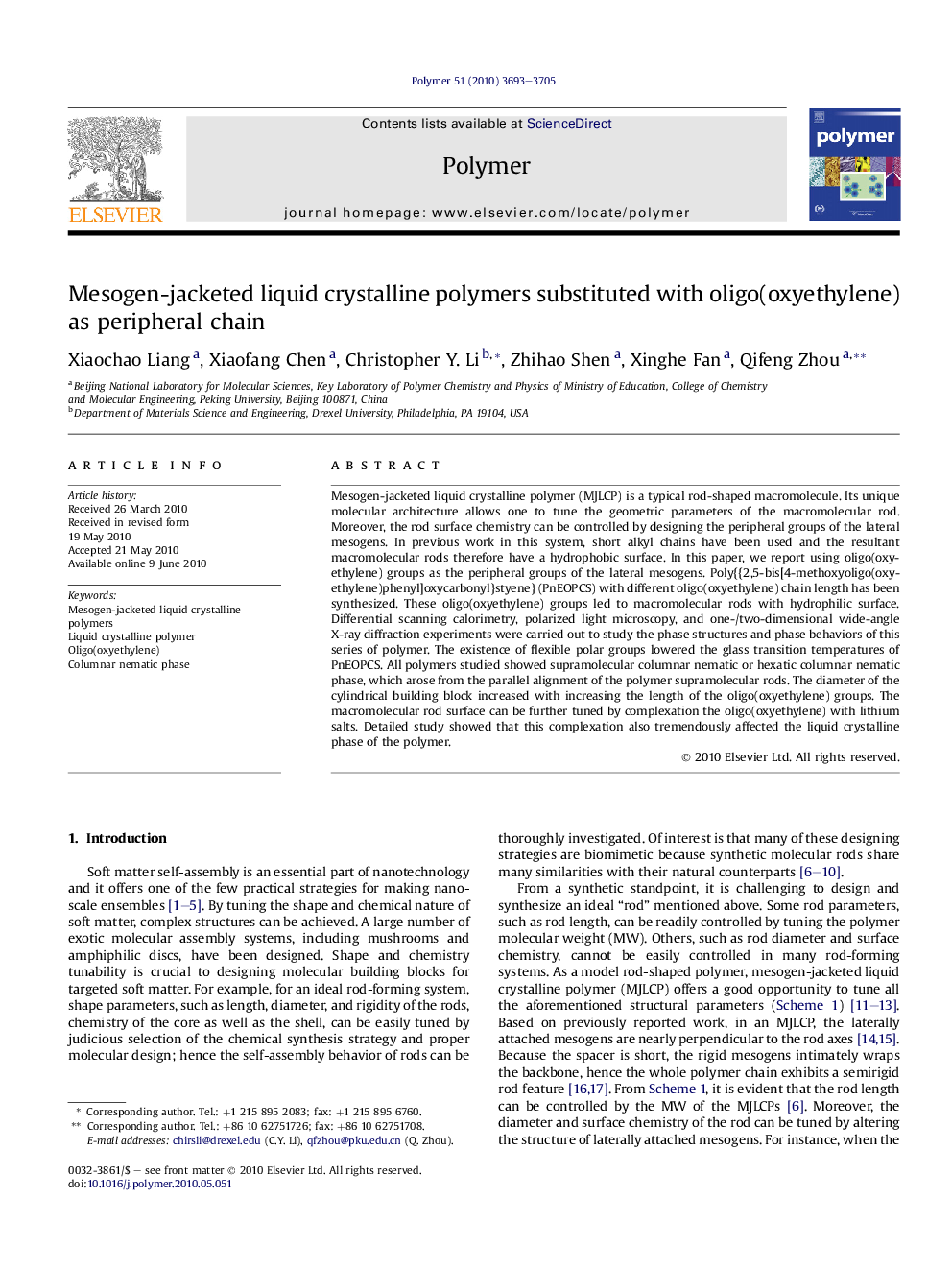| Article ID | Journal | Published Year | Pages | File Type |
|---|---|---|---|---|
| 5183993 | Polymer | 2010 | 13 Pages |
Mesogen-jacketed liquid crystalline polymer (MJLCP) is a typical rod-shaped macromolecule. Its unique molecular architecture allows one to tune the geometric parameters of the macromolecular rod. Moreover, the rod surface chemistry can be controlled by designing the peripheral groups of the lateral mesogens. In previous work in this system, short alkyl chains have been used and the resultant macromolecular rods therefore have a hydrophobic surface. In this paper, we report using oligo(oxyethylene) groups as the peripheral groups of the lateral mesogens. Poly{{2,5-bis[4-methoxyoligo(oxyethylene)phenyl]oxycarbonyl}styene} (PnEOPCS) with different oligo(oxyethylene) chain length has been synthesized. These oligo(oxyethylene) groups led to macromolecular rods with hydrophilic surface. Differential scanning calorimetry, polarized light microscopy, and one-/two-dimensional wide-angle X-ray diffraction experiments were carried out to study the phase structures and phase behaviors of this series of polymer. The existence of flexible polar groups lowered the glass transition temperatures of PnEOPCS. All polymers studied showed supramolecular columnar nematic or hexatic columnar nematic phase, which arose from the parallel alignment of the polymer supramolecular rods. The diameter of the cylindrical building block increased with increasing the length of the oligo(oxyethylene) groups. The macromolecular rod surface can be further tuned by complexation the oligo(oxyethylene) with lithium salts. Detailed study showed that this complexation also tremendously affected the liquid crystalline phase of the polymer.
Graphical abstractDownload full-size image
